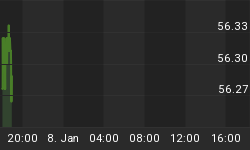By James Hyerczyk
The GBP USD closed higher after a report showed the opposition Conservative Party's lead over the Labor Party widened, easing concerns that the May 6th election will produce a hung parliament. Traders had been pressuring the British Pound lately because of concerns that a hung parliament would result in a government too weak to tackle the U.K.'s huge budget deficit. Gains could be limited on speculation that bullish traders will begin to liquidate their long positions ahead of the election.
Technically, this currency found support following an early test of an uptrending Gann angle support at 1.5397. Look for this market to continue to remain strong as long as this angle holds as support. The next upside objective is a 50% level at 1.5618.
The EUR USD finished down off its low. Following a sharply lower opening, the Euro mounted a small comeback throughout the day as reports surfaced that the International Monetary Fund will meet with Greece on Monday to discuss financial aid options.
Market participants are feeling jittery again because of concerns over Greece. Investors are worried that the IMF/EU $61 billion financial aid plan will not be enough to help the Greek economy and restore confidence in the Euro. At this time, the Euro is facing serious credibility issues.
Last night China reported that its Gross Domestic Product grew 11.9 percent from a year ago. This was slightly better than the median guesses of 11.7 percent. The news that China's economy accelerated more than expected in the first quarter raised concerns that it may be overheating, prompting more talk of a possible interest rate hike. Traders are also increasing speculation that China may revalue its currency as soon as next week. If this takes place, look for the Japanese Yen to strengthen and the U.S. Dollar to weaken along with the Australian and New Zealand Dollars.
U.S. economic reports this morning helped weaken the Dollar after Weekly Initial Job Claims and Industrial Production were less than stellar. The job claims report showed more Americans filed for unemployment aid while factory production came in below expectations. Both reports signaled interest rates would remain low.
News that China's GDP was up slightly more than expected during the first quarter helped to pressure the USD JPY. Technically, the charts indicate that downside momentum could take this market down to 92.26 over the near-term. Traders should also note that the general consensus suggests that the Japanese Yen is likely to gain when China decides to revalue its currency. A revaluation of the Yuan is likely to put pressure on commodity-linked currencies to the benefit of the lower yielding Japanese Yen.
Short-covering ahead of next week's Bank of Canada meeting on April 20th may have helped to underpin the USD CAD. The chart formation suggests the possibility of a short covering rally to 1.0020 to 1.0046. Oversold conditions are also helping this market recover after touching a new low for the week on Wednesday.
For over a year, Bank of Canada Governor Mark Carney has pledged to keep interest rates at a record low of 0.25% through June. However, Canadian financial markets are indicating that rates may rise as early as June 1. This helped pressure the USD CAD below parity recently. The bigger picture suggests that the Canadian Dollar is likely to continue to rise because of the stronger-than-expected economic recovery and expectations of interest rate increases.
The AUD USD rose overnight following China's strong GDP report. Weaker demand for higher yielding assets, however, quickly brought in sellers. The recent two day rally may be setting up the market for a break. This is possible due to the closing price reversal top at .9387 which is still weighing on the markets. A trade through .9223 will turn the main trend down. Bullish traders appear to be approaching the long-side with caution following rumors the Chinese will revalue the Yuan next week. This action could spell decreased demand for Australian commodities and raw materials.
The NZD USD felt similar pressure but this market continues to remain glued to a major 50% price level at .7124. This price is controlling the short-term direction of the Kiwi. The longer-term charts indicate that downside pressure is likely as long as the Kiwi remains below .7200. A break through .7086 will turn the main trend down. Traders may begin selling the New Zealand ahead of next week's possible revaluing of the Yuan by China.
















